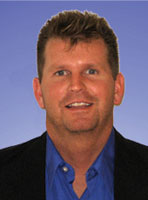Along with the trend toward sports specialization and the subsequent proliferation of sport-specific clubs and travel teams, many amateur sporting events have grown significantly in stature and interest in the past several years. Consequently, these events have realized significant economic benefits for the communities in which the events are conducted.
 With parents, extended family members, and friends traveling to 'City X' to watch these athletes perform against a top-level field of competitors (e.g. state, regional, and national tournaments), it becomes necessary for a sports/event organizer and the tournament/event host community to provide hotel accommodations as well as relatively easy access to restaurants, shopping, and entertainment venues. By taking advantage of theseadvanced booking opportunities, the community gains from the sales tax spent while 'City X' is recognized as an outstanding place to play and watch baseball, soccer, or basketball, or whatever the sport.
With parents, extended family members, and friends traveling to 'City X' to watch these athletes perform against a top-level field of competitors (e.g. state, regional, and national tournaments), it becomes necessary for a sports/event organizer and the tournament/event host community to provide hotel accommodations as well as relatively easy access to restaurants, shopping, and entertainment venues. By taking advantage of theseadvanced booking opportunities, the community gains from the sales tax spent while 'City X' is recognized as an outstanding place to play and watch baseball, soccer, or basketball, or whatever the sport.
Also, in communities across the United States, recent downturns in the economy have heightened the importance of sporting events as a means for attracting visitors. While, on the whole,the economic impact of sporting events in the United States continues to rise, the economic impact is not uniform.
What this means is that sports event organizers are becoming increasinglyreliant upon research and analysis, in addition to mutually beneficial partnerships with local/regional commissions and/or CVB's so as to better ascertain the economic climate and opportunities in agiven region or community.
It used to be the case that only major sporting events (those designed to attract 50,000 visitors or more) garnered the kind of marketing focus that has now become standard for smaller events (those with the potential to attract as few as 500 room nights). In the increasingly competitive world of sports destination management, attention is shifting toward community tournaments, organized youth events, and privately owned sports venues that allow for regional or national events. There are three major groups that contribute to economic success for sportingevents. They are the event organizer, the host committee, and the customer/audience.
The Event Organizer
Just as local governments or community steering committees issue detailed RFP's during the initial stages of sports/recreation/fitness facility development, so too do organizers rely on such formal RFP responses in their assessment of potential sites for tournaments, camps, clinics, showcases, etc.
The organizer includes any organization or individual that is seeking to plan a sporting event. In the world of youth/amateur sports, some of the more prominentorganizations include AAU, USSSA, YBOA, U.S. Youth Soccer, and U.S. Volleyball. Such groups have become increasingly adept at evaluating potential locations for their events. The ultimate goal for these sports event organizers is to create memorable experience that sets the event apart from others. Also, because these events have evolved into mini family vacations, it is becoming increasingly important that these families are near major thoroughfares and in close proximity to virtually everything from lodging, shopping, and dining to entertainment and sightseeing. Essentially, the farther people travel for the event, the more time they will need in the surrounding area.
The event organizer should be cognizant of not only the immediate potential success of a particular event but also the potential future opportunities that could result from a successful event. In the early stages of site selection and the early stages of the relationship with host committees and communities, questions such as, "Will the venue and location provide the capacity necessary to achieve the long-term goals of the organizer and the community?" or "Will we outgrow the venue too quickly?" should be addressed. What's important here is the relationship and communication between the event organizer and the venue manager about the commitment to expand amenities or inventory over time, and this should be discussed early on to ensure alignment of mission and vision.
Event organizers will want to evaluate multiple potential locations or seek to optimize a location already in mindor already under agreement. The evaluation for the event organizer who is considering multiple sites includes the following criteria:
Value added and relevant attractions for distant travelers such as,
Disney's Wide World of Sports Complex in Orlando, Fla. (proximity to The Magic Kingdom, Universal Studios, and Epcot Center)
Cooperstown, N.Y. "Dreams" park (proximity to Pro Baseball Hall of Fame)
State high school football tournament games in Canton, Ohio (proximity to Pro Football Hall of Fame)
Security
Low crime rate environments tend to attract overnight stays
Lodging in a variety of price ranges
Dining in a variety of price ranges
Other sport and recreation offerings
Quality of the venue
Customer service
Pricing
Collaboration on marketing efforts and the support offered through sports commission and CVB's
"The most important aspect is the site; the number and quality of fields or courts," said Javier Cavazos, who serves as the Baseball/Softball Director for AAU of Michigan as well as the Director for Boys/Girls Basketball for the YBOA of Michigan. "But all of that other stuff is so important as well, like getting top-level teams and top-level officiating."
The Host Committee
The host committee serves as the intermediary between the Organizer and the Customer. Although often working collaboratively, the host committee's responsibility is to serve the needs of the Customer/Audience while adhering to the mission and vision of the Organizer. The Host Committee achieves this delivery on the Organizer's value proposition through their relationship and dealings with the local CVB's and through what is sometimes overlooked, the corps of volunteers.
"Volunteers are a big part of those local organizing committees," said Jim Cosgrove, the Executive Director of U.S. Youth Soccer.
"Gatekeepers, merchants, maintenance, selling programs, hospitality tents; you've got to go and find help for all of that," Cavazos added. "A lot of people solicit youth organizations such as Kiwanis, Lions, and Rotary. You need support not only fromyour local league, but from your community as well."
This kind of support from the local government and the community members in general should be addressed at the onset of site selectionvia the RFP. It is then up to the organizer to ensure that the host committee delivers on the criteria outlined in the RFP so as to bolster the customer experience along with the brand of the organizer. Depending on the level of event (local, state, regional, national), the host committee must deliver on a "well run, smoothly operated" experience for the customer/audience.
A "well run"event, which helps to ensure repeat business from the current customers and also benefits the community by greatly increasing the likelihood of the organizer's return to the area, includes many factors such as the following:
Parking
Accomodations
Transport (to/from site)
Information areas/tents
Concessions
Rest rooms
Changing rooms
Hospitality areas/tents
Hospitality packets (info about area restaurants, merchants, and services)
Entertainment options
Sightseeing tours
Event rooms/event sites foropening and closing ceremonies
Proactive host committees are constantly taking stock of the local sports venue inventory and the other amenities that lead to success with these important economic attractions. Additionally, there are several steps that a proactive host committee can take to develop a robust and successful plan for attracting new sporting events:
Current Reality Assessment
Complete a thorough inventory of regional sports assets. (Note: These assets may extend beyond playing fields, swimming pools, and court spaces.Host committees will also want to consider outdoor adventure assets, fishing assets, road race assets, and others which may not be top of mind to the traditional team sports mindset.)
It will also be important in this phase to identify competing forces within the host committee's own community and to identify a plan of action for maximizing collaboration where needed.
An additional outcome of this phase is the identification of the market segments based on the different venues that will be part of the inventory analysis.
Define Target Audience/Customer Needs
Clarify the target audiences and their needs. This includes defining the target audience that the host committee seeks to attract. The needs of this audience may be defined through interviews and/or surveys. Such interviews/surveys may also assist the assessment of competition and obstacles to success.
Desired Reality
Clarify the 1-, 2- and 3-year vision for the sports event. (Note: This should be measurable, realistic, and based on comparable success stories for communities similar in size and sports assets.)
Business Plan Development
Next, the host committee would need to develop a business plan for thegrowth of local/regional/national sporting events.
The CVB
Depending on the size and scope of the event, it could be either the event organizer or the host committee that solicits the services of the local CVB.
 "Once the bid process is completed, we get together with the local organizing committee or the 'host' committee, and then they will access the local CVB's," Cosgrove said.
"Once the bid process is completed, we get together with the local organizing committee or the 'host' committee, and then they will access the local CVB's," Cosgrove said.
"If I am going to schedule an event, guess who my first call is going to be - the CVB's," Cavazos said. "For me, the CVB's have been essential.
"Number one, they are potentially capable of helping you out financially. Number two, they may provide you the leads to the hotels/motels. Remember, in order for them to survive they have to have accountability and they have to hit their own numbers. They have to be able to go the mayor and say, 'we brought in 'x' number of rooms for this event.' So they are helping you, but we are also helping them."
Bringing in the CVBis essential not only for event success but also for marketing and branding of the organizers and the event itself.
"Another important benefit in working with the CVB's is that it gives you thecredibility that you have everything together and organized," Cavazos added. "And that's where all those other things come into play like quality umpires and concessions. I like to compare it to a wheel; if a piece is missing, it's going to be flat."
In addition, proactive CVB's, commissions, local chambers, and hotel and lodging associations can assess the local sports inventory and selectlocal partners to create plans to attract larger sporting events.
The Customer/Audience
Of course, it is the customer/audience that must be served for these events and organizations to besuccessful. The customer will be satisified as long as there is an understanding of and response to the customer's needs. Customers include the players, spectators, and, in some cases, vendors.
"When you are dealing with people who are giving you money," Cavazos said, "you want them to be satisfied."


